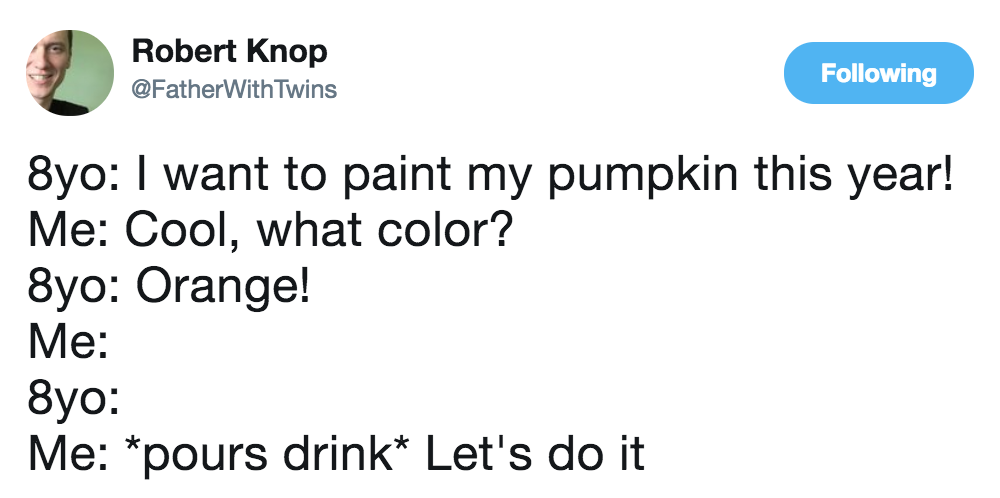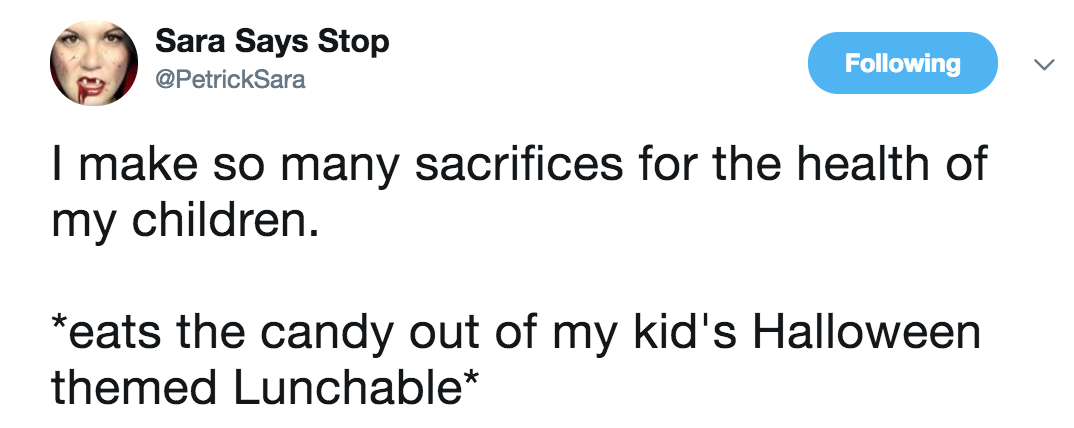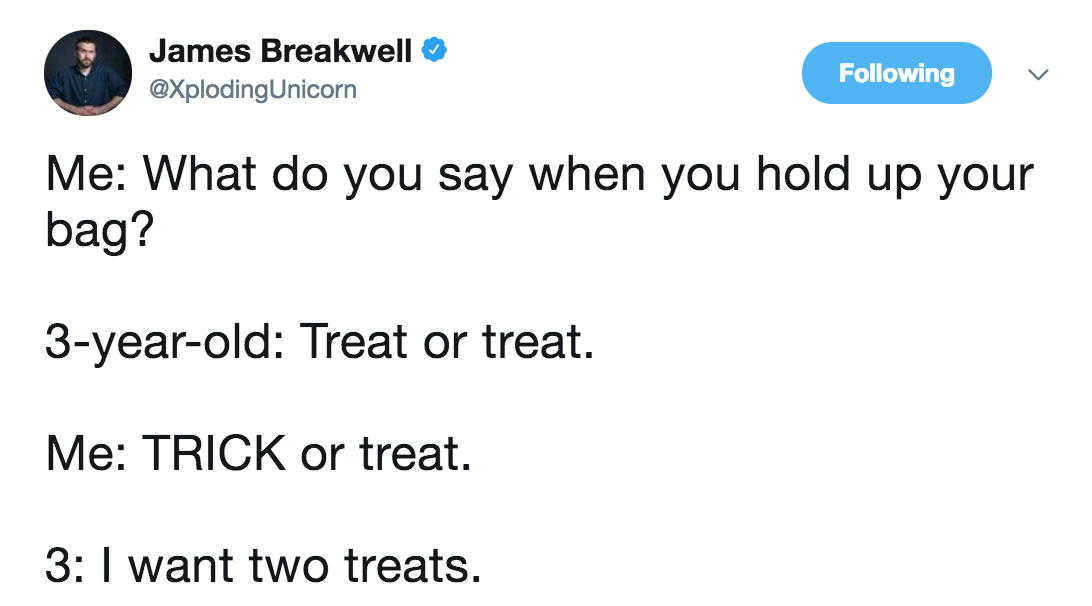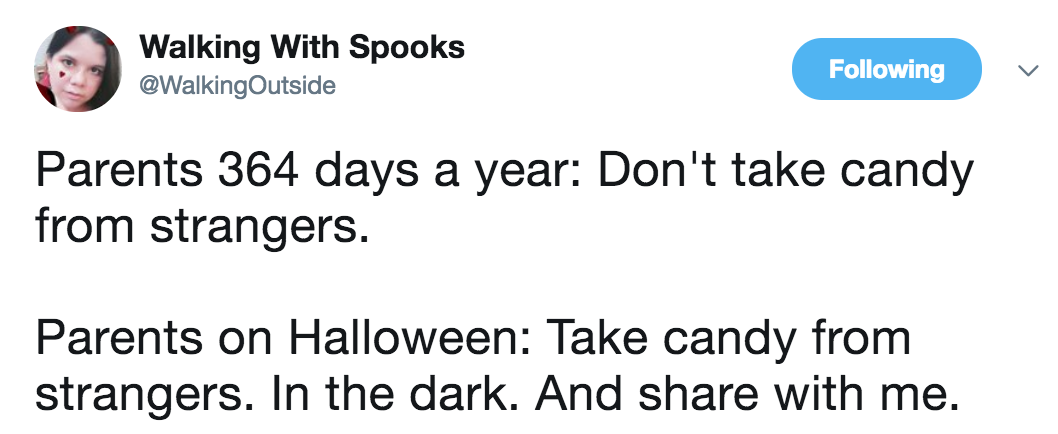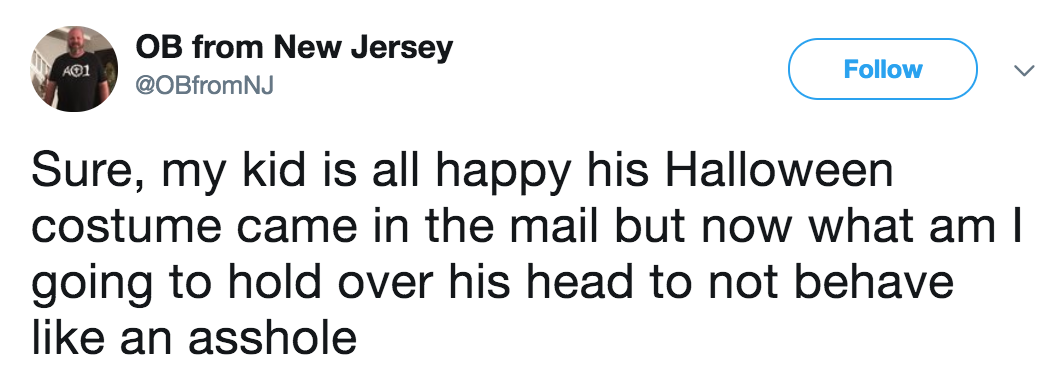10 Soothing Self-Care Tips Straight From Therapists
Therapists spend so much time helping other people with their mental health, it kind of begs the question: how do they look after their own?
Like, on the one hand, they’re obviously well-equipped with the mental health know-how to look after themselves, but on the other, spending all day sitting with people and their mental health problems can’t be easy.
To get some answers, BuzzFeed Health asked 10 therapists what self-care means to them. Here’s what they shared:

1.
“I keep thinking about how different self-care would be depending on what therapist you ask. My coworker who has three children to go home to is going to have a different version of self-care than my coworker who runs her own side business on top of a full-time job. For some, self-care means quality time with family, unwinding from mindless television at the end of a long day, planning vacation times, and participating in social activities outside of work, all offering a different reward.
For myself, I have always found most of my self-care — my refueling — in more introverted activities. I do my best when I get to listen to meditations that ground me on a daily basis, step out into nature, spend time taking care of my own personal to do list, etc.”
—Beth Rue, MSS, LSW, primary therapist at Summit Behavioral Health
2.
“I think a lot of helping professionals find it second-nature to guide and support others on their life journeys while we can easily lose ourselves in the mix. What helps me immediately during and after an emotionally challenging day is to use humor to lighten things up for myself. Sometimes that means cracking jokes with colleagues to lessen the stress felt that day, or having a light-hearted and humorous conversation with someone who ‘gets me’ and my sense of humor, or watching a show or film I know I will get a kick out of to make myself laugh. Laughing out loud is a powerful antidote to emotional distress that always helps me lift my spirit.”
—Gabriela Parra, LCSW, California-based clinical social worker

3.
“Most important to me is being aware of what’s going on for me at any given time. Being honest with myself about where I am emotionally, and what might make me more sensitive or less objective than usual — what might make me not be able to do my best work. I accept that I am human and may have humanly imperfect reactions to things, but I have to stay on top of them to keep them from getting in the way.
I also like to create a buffer between work and home: taking some time after my sessions just to decompress and clear my mind, even if brief, before I immediately sail into Mom/Wife/Friend mode with the people in my life. And of course, above all, I have to keep taking care of myself: practice what I preach in terms of having hobbies, being active, getting outdoor time, prioritizing sleep (this one can be tough!) and staying social with the people whose company I enjoy.”
—Andrea Bonior, PhD, clinical psychologist and author of Psychology: Essential Thinkers, Classic Theories, and How They Inform Your World
4.
“I try to take care of myself physically by going to the gym regularly and exercising. Working out gives me a tremendous boost in how I feel physically and mentally. I also practice what I preach, which is not to compare myself to others. It is important not to project onto other people thoughts that their lives are so much better than my life or that I have am not successful because I have not accomplished what others may have achieved.”
—Marc Romano, PsyD, director of medical services at Delphi Behavioral Health

5.
“Quite similar to self-care for everyone else. A multi-vitamin is incredibly important for self-care for me. Work-wise, mixing my daily tasks with learning and upgrading my skills. Going for an evening walk is really important for me too. I take my child to the park for a run around and then put her in the stroller and do my own walk.”
—Alice Boyes, PhD, former clinical psychologist and author of The Anxiety Toolkit
6.
“A go-to for me in order to decompress and recharge is getting out in nature. Nature-therapy, as I like to call it, allows me to be in the moment, check in with myself, connect with the world around me, and get some much needed fresh air. The benefits of spending time in nature are unbe-leaf-able (!) as it is a proven way to calm the mind and body!”
—Joanna Boyd, MCP, RCC, Vancouver, Canada-based clinical counsellor

7.
“For me, self-care means being fully engaged with a client when we’re together, giving all I can through my attention, care, and planning, and then letting them return to their life when the day is done as I turn my attention back to my own needs. Many years ago I realized that taking my work home stemmed from a lack of trust. I felt I didn’t give enough in the sessions and needed to worry to make up for it. But this wasn’t true. I found that I needed to trust that I’m giving all I can to my clients, trust that they are capable of healthy growth and self-care, and trust in the therapeutic process; that our collaboration is a force for good.
Of course, there are exceptional cases that require work beyond the session, and I often think of my clients when I’m off the clock, but I’m able to enjoy my down time more when I embrace trust. When I have trust in myself, my clients, and therapy, I can pivot to enjoy time with my family, working out, playing in my rock band, and continuing my weekly quest to create the world’s best spaghetti sauce.”
—Ryan Howes, PhD, clinical psychologist and professor at Fuller Graduate School of Psychology
8.
“Much of my self-care involves activities that help me to feel calm, strong, and connected – all important things in my line of work. I spend a lot of quiet time in nature, which helps me to slow things down and calm both my body and my mind. I also really love group fitness classes, which help me to feel strong both inside and out, and ready to support my clients through the most challenging of moments. Perhaps most importantly, I spend time with friends and family, with whom I feel loved and supported. When things become difficult or overwhelming, they help me find perspective, sometimes simply with a much needed laugh.”
—Amanda Zayde, PsyD, New York City-based clinical psychologist

9.
“It’s so important for us to practice what we preach! Namely, having a balanced life that includes time with friends and family, getting a good night’s sleep and eating well, exercising, and doing things just for me (e.g., reading a good summer novel, cheering on my Tennessee Titans games, etc.). It’s also incredibly valuable to have a trusted mentor or two to seek guidance from when things have been particularly stressful.”
—Simon Rego, PsyD, chief psychologist at Montefiore Medical Center/Albert Einstein College of Medicine
10.
“I try to practice exactly what I recommend my clients: at least a few minutes of daily mindfulness practice, a daily gratitude minute, regular exercise (like 4-5 times/week), and time with people. There are so many incredible benefits to learning to enter the moment, turn towards the positive, develop a sense of accomplishment, and experience connections.
People do ask me about the difficulty of sitting with people in pain. Of course I empathize and it is hard to hear about how deeply some of my clients are struggling. That said, I find my job to be an opportunity. I totally believe evidence-based tools can change people’s lives so generally feel lucky and hopeful that people are courageous and that the science of psychology has evolved in a significant way.”
—Jennifer L. Taitz, PsyD, LA-based clinical psychologist
By the way, if you’re feeling curious about therapy yourself, you can learn more about how to start here, since pretty much everyone can benefit from talking to a professional. For more information on free and affordable mental health care options, check out this guide.
By Anna Borges
https://www.buzzfeed.com/annaborges/therapist-self-care?utm_term=.rsy887jd15#.yo5kk1OXvL
Go Take A Hike (And Get Some Vitamin D)
Do you ever feel less energized, motivated or happy during the winter months? If you do, you aren’t the only one. Many people’s moods and feelings are affected by the amount of sunshine and vitamin D they receive. “Some studies suggest an association between low vitamin D levels in the blood and various mood disorders, including depression, seasonal affective disorder (SAD), and premenstrual syndrome (PMS)” says Mayo Clinic.
There are over three million cases per year of seasonal affective disorder (SAD), which is a mood disorder that occurs around the same time every year. SAD most often occurs during the fall and winter, but it can also occur during the spring and summer.
SAD can cause people to feel moody, gain weight, crave carbohydrates, lack focus and feel more tired even if they are sleeping more. Even if you don’t meet the qualifications of being officially diagnosed, getting enough sunlight is still important to your overall mood.
In previous years, I would always notice these types of symptoms begin to flare as fall turned to winter. In order to prevent my normal winter blues, I began to go for walks or runs around my neighborhood for 30 minutes a few times each week. I even went for walks when it was snowing, so that I didn’t remain inside for too long.
Since I started doing this, I began to not notice the drop in mood, focus and energy that I had been associating with winter for years. Not only that, but I also felt better overall. Below are some of the other health benefits to spending time outside even when it’s cold:
Less Stress and Anxiety
There is something innately relaxing —for most people—about spending time in the great outdoors. It gives you the chance to bring yourself into the present, sending your anxious thoughts out of your mind for a little while. Taking time to clear your head has lasting effects on your overall stress and anxiety levels. Also, studies have shown that certain scents within nature, such as jasmine, pine and lilacs have been shown to reduce stress and anxiety.
Stronger immune system
Vitamin D is a critical nutrient to how our body maintains a healthy and strong immune system. The easiest way to get this vital nutrient is by spending time soaking in the sun.
When we are breathing fresh air amongst plants and trees, we are also breathing in phytoncides. These are airborne chemicals that plants give off to protect themselves. This natural chemical contains qualities that are meant to help fight off disease.
More Energy
Spending a lot of time inside can alter our circadian rhythms and throw off our sleep schedule. Being exposed to sunlight in the morning helps recalibrate these cycles, so that we sleep better at night and feel more energized during the day.
Improved Focus
The urban environments we are accustomed to constantly drain our attention spans. Between cell phones, traffic jams, crowding and noise, are brains need a break every once in a while. “Using too much directed attention can lead to what they call “directed attention fatigue” and the impulsivity, distractibility and irritability that accompany it. The inherent fascination of nature can help people recover from this state” research from the American Psychological Association shows. Spending time focusing on the nature that surrounds us allows our brains to rest, which in turn helps us to focus better later.
If you are worried about being cold, dress the way you would if you were a kid on a snow day: wear layers, gloves, a scarf, a hat, etc. Or do a form of exercise that will get your blood pumping and warm you up. You can also bring a hot beverage along with you for your activity. Especially on a sunny day, preparing for the cold can be manageable.
Looking for ideas to get started? Here are my 10 favorite things to do outside:
- Walk around a lake or park
- Find a cozy spot outside to read
- Eat lunch outside
- Play Frisbee with a friend
- Go for a run around my neighborhood
- Hike a trail
- Ice skate at the outdoor rink
- Borrow (and make sure to return!) a friend’s dog and go to a dog park
- Get a group together to play capture the flag (or any other game)
- Go on a ski trip!
Whoever this anonymous person is, he or she got it right: “I’ve never found time spent amongst nature to be a waste of time.”
By Laura Greenstein
https://www.nami.org/Blogs/NAMI-Blog/December-2015/Go-Take-a-Hike-(and-Get-Some-Vitamin-D)
“All The Bright Places” Shines A Light On Love & Loss
Trigger Warning: Sucide
“‘Oh, there he goes again, in one of his moods. Moody Finch. Angry Finch. Unpredictable Finch. Crazy Finch.’ But I’m not a compilation of symptoms. Not a casualty of bad parents and an even worse chemical makeup. Not a problem. Not a diagnosis. Not an illness. Not something to be rescued. I’m a person.”
This passage is from the insightful young adult novel All the Bright Places, which brings together two teenagers experiencing the hardships of mental illness, suicidal thinking and grief. This is author Jennifer Niven’s first young adult novel; in it, she uses her personal experience as a survivor of suicide to spread awareness about what it’s like to live with mental illness.
Using relatable characters, she paints a beautiful story of love and loss. Niven’s main character Theodore Finch asks himself, “Is today a good day to die?”—introducing suicide, the main theme of the book, in the very first line—as he stands on the ledge of a bell tower at his high school. Niven then introduces Violet Markey, who also finds herself on top of the looming bell tower, though she doesn’t fully understand how she got there. And so begins Finch and Violet’s ominous love story.
Throughout the book, Niven emphasizes how someone going through mental health challenges can believe that suicide is a reasonable solution to their condition. Finch regularly considers all the different ways he could end his life, logging them with a list of pros and cons. Finch’s ideations are revealed mainly to the reader, but occasionally to other characters.
Readers can see that what Finch is going through is bipolar disorder even though “depression” and “mania” are never mentioned, and he doesn’t receive his diagnosis until well into the book. Instead, Niven uses terms like “Awake,” “Long Drop” and “Asleep” to describe the cycles of his mood. As his “Long Drop” nears closer, tension builds around Finch’s frame of mind. But while he considers ending his life, he simultaneously teaches the grief-stricken Violet how to live hers.
Violet never receives any diagnosis throughout the book, but it is implied that she may be experiencing Post Traumatic Stress Disorder (PTSD) after being in a car accident that killed her older sister. She stops trying in almost every aspect of her life and isolates herself from people she used to spend time with. She refuses to be in a moving car, has consistent nightmares and can’t get herself to write—a once-favorite activity she used to share with her sister.
Finch encourages Violet to ride in a car again, to go to new places and write again. Without Finch, Violet may have taken years to fully live her life again. On the other hand, Finch’s condition only worsens with time, even as his love for Violet helps him experience “all the colors in full brightness.”
These two teenagers have more to grapple with than typical drama and nightly homework that plague everyone during the high school years. They have symptoms, stigma and the question of why life is worth living to contend with and Niven manages to showcase just how difficult mental illness is, especially during adolescence when mental health conditions often onset. The book concludes in a way that makes readers understand that when you live with mental illness, sometimes you have happy endings and sometimes you don’t.
Laura Greenstein is communications coordinator at NAMI.
https://www.nami.org/Blogs/NAMI-Blog/March-2017/-All-the-Bright-Places-Shines-a-Light-on-Love-L
Teaching Kids About Mental Health Matters
Trigger Warning: Suicide
One November day in Gaston County, NC, traffic was at a stand-still on I-85. It was unfortunately caused by a 16-year-old who took her life on the highway. As cars grinded to a halt, a pick-up truck was rear-ended by someone not paying attention. The driver of that truck lost his life.
If someone had recognized the warning signs of suicide in this young girl and gotten her help, two deaths could have been avoided that day.
This incident really affected me. I’m from Gaston County and with all the advocacy work I do in Charlotte as a member of NAMI Charlotte and as a new state board member of NAMI NC, I felt that I had neglected my hometown as a mental health advocate. Also, I know what it’s like to feel the pain of wanting to take your own life.
I felt that way twenty-two years ago on Valentine’s Day, 1995. Thank goodness, my aunt heard my cry for help, knew the warning signs and saved my life. When you go through something like that, I feel you are obligated to turn around and help others who are dealing with the same pain. I knew I had to do something in my hometown.
Starting The Conversation In School
I went to Ami Parker, Director of Counseling Services for Gaston County Schools, and told her, “I don’t want to see what happened to the young lady on the Cox Road Bridge happen to another child.” I asked her to consider a Mental Health Awareness Week in the Gaston school system. And Ami didn’t hesitate. She even took it a step further, planning for the children to take the lead.
She knew kids would respond better to kids and the conversations they would start amongst themselves—and they did. They went online and got information to present to other students that would get them involved. Because of this, kids from middle to high school were truly engaged in the week-long Mental Health Awareness Week. They created posters and banners from everything that said, “See the person, not the illness” to “Our school is StigmaFree.”
I can’t tell you how proud I am of the kids being so engaged and involved. One middle schooler told me that she rode the bus with a boy who cut himself. She had told him to “quit cutting” himself, but he didn’t. In this teachable moment, I told her that she did the right thing, but he needed more help than she could give. And she needed to let someone know he needed help. The young girl agreed that she would.
This is exactly why events like these are so important. It starts conversations among children. If we can start conversations with children, maybe those conversations can spread to parents.
Steps To Spread Awareness To Schools
If you want to have a Mental Health Awareness Week in your local school, start with the school’s counseling department, like I did. Make sure you’ve done your research on mental health, stigma and suicide, so when you talk to a counselor they’ll see you’ve done your homework. Most counselors would be glad to help you bring this deserving cause to the attention of the principal and teachers. I am so proud of and thankful for Ami Parker and her willingness to be proactive with bringing awareness to mental health. And I’m sure there are more people like her out there. We dedicated our event to the young girl who died by suicide in November, in hopes to stop others kids from going down the same path.
Kids are our next generation. We should be teaching them about the importance of mental health and the warning signs of mental illness. If we teach them well enough, maybe stigma won’t exist once their generation grows up. Maybe they will know when to ask for help and when to offer someone support. Maybe lives will be saved. With the looks of things, I think Gaston County schools are off to a very good start.
By Fonda Bryant
Fonda Bryant is very active in the community bringing awareness to mental health. She has been a volunteer with NAMI Charlotte for over three years and recently was elected to the state board of NAMI NC. She also volunteers with MHA of Central Carolinas and with the AFSP. She speaks to the rookie classes of CMPD, and is vocal about mental health, whether on television, in the newspaper or radio, her passion for mental health knows no boundaries.
https://www.nami.org/Blogs/NAMI-Blog/May-2017/Teaching-Kids-About-Mental-Health-Matters
Lessons We Missed As Kids: Practicing Mental Health
During childhood, we learn lesson-by-lesson how to take care of ourselves. Many lessons pertain to our health—such as bandaging a scrape so it doesn’t get infected. But typically, our childhood health lessons involve only physical health. What are kids taught to do when they feel lonely? Or when they feel rejected by other kids? The answer, usually, is nothing.
Why is physical health prioritized more than psychological health? Psychological health weathers many wounds—some might even argue we experience more emotional wounds than physical. These wounds—such as feelings of failure, inferiority, anxiety, rejection, loneliness—routinely get infected and worsen because we don’t know how to treat them. In fact, it doesn’t even occur to us that we should.
These emotional and psychological wounds impact our lives for years, often more than we realize. We tell ourselves that these problems are in our head, that they will go away and we will return to “normal” eventually. But imagine if we treated a broken leg the same way: We would likely never walk again.
How Can We Practice Mental Health?
Our quality of life would dramatically improve if we learned and practiced emotional hygiene. We would cope better with difficult situations and build emotional resilience. Even though we don’t learn how to do this as kids, there are many proven ways to prevent and treat psychological wounds throughout life. Below are a few.
Battle Negative Thinking
What is our natural inclination when something is bothering us? We think and think in a vicious, negative cycle about everything that is wrong. This is an instinctive tendency that only wounds us further; it is also one of the most challenging habits to break.
According to Psychology Today, recent neuroscience shows that we can train ourselves to self-regulate negative emotions and rewire our brains to move toward loving/kindness, empathy and positive emotions. So every time you start to focus on the negative, distract yourself—even if only for two minutes.
Calm Your Thinking
One way to battle negative thinking is through meditation. Meditation is often seen as the practice of controlling the mind and stopping all thought, but that doesn’t work for most people. If meditation instead involved stepping back from our thoughts and looking at them with a relaxed, focused mind, we might have a better chance at reducing everyday stress. So how can we achieve this? Take each thought—one at a time—and focus on it. Is it really important? Is this thought productive? Then move on. Consider each thought like a cloud in the sky. Focus on one thought at a time to determine what it resembles, then let it pass by so you can move your attention to the next.
Change Your Response To Failure
One of the hardest thought cycles to let go of is when we feel as though we have failed at something. A typical response to failure is self-blame and an attempt to gain something positive from the experience: a new perspective, a lesson, motivation to work harder, etc. While this may seem like the most productive response, it isn’t, according to the Harvard Business Review.
The only way we should respond to failure is with empathy. We must greet our failures with the understanding that it’s okay to fail. We must stop trying to derive something positive from a negative. We should accept our mistakes and not blame ourselves for what happened. Life is messy, and it’s normal not to be perfect.
Show Yourself Compassion
If your friend was feeling down, how would you make them feel better? Maybe you would validate their feelings, offer support or reminisce on something positive. Showing this kind of compassion and understanding is what a good friend does—so why don’t we do the same for ourselves?
Rather than berating yourself for negative feelings or failures, treat yourself the way you would treat a close friend. Tell yourself that you understand what you’re going through and that you shouldn’t feel bad for having a hard time. Ask yourself, “What can I do that would make me feel better?” Also think about a time when you felt good, and try to harness what that felt like. These are all things we hope our friends will do for us, but we are more than capable of providing this kind of compassion to ourselves.
Take Action When You’re Lonely
According to the New York Times, loneliness has been linked to physical illness, functional and cognitive decline, and even early death. Research also shows that people who feel lonely are more likely to isolate themselves even further. This is because loneliness changes the way our brain functions and causes people to subconsciously guard themselves and go into self-preservation mode.
With that in mind, seek out relationships that make you feel connected. It doesn’t help just to be around other people; loneliness doesn’t always mean you are literally alone, but rather that you feel socially disconnected. Take a class, rekindle an old friendship, Skype your family members, volunteer at your local community center or do anything else you can think of to force yourself out of isolation.
Slow Down
Sometimes we can become socially disconnected because we are too busy. Having time to recharge is essential for our minds. New York Times writer Tim Kreider comments that “idleness is not just a vacation, an indulgence or a vice; it is as indispensable to the brain as vitamin D is to the body, and deprived of it we suffer a mental affliction as disfiguring as rickets.”
According to the research article “Rest Is Not Idleness: Implications of the Brain’s Default Mode for Human Development and Education,” rest allows the brain to process any new information that it has absorbed, work through unresolved conflicts and reflect. Rest can also help lower levels of stress and anxiety and increase our memory and ability to focus. So use your personal days!
Be Grateful
Slowing down also gives us time to appreciate what we have. Research supports an association between gratitude and an overall sense of wellbeing. Consciously practicing grateful thinking each day can strengthen connections with other people, reduce anxiety and depression, and improve self-worth.
Wake up each morning with the question, “What do I appreciate about my life?,” and write down a few things, even if they are simple or obvious. In time, you will feel a positive effect on your outlook. It is not happiness that makes us grateful—it is gratefulness that makes us happy.
These are only a few of the many methods to practice mental health and achieve psychological well-being. While implementing these practices into your life can be challenging (because they are often opposite to our natural instincts), they can make a huge positive impact in your life.
Laura Greenstein is communications coordinator at NAMI.
Note: This piece is a reprint from the Spring 2017 Advocate.
https://www.nami.org/Blogs/NAMI-Blog/August-2017/Lessons-We-Missed-as-Kids-Practicing-Mental-Healt


